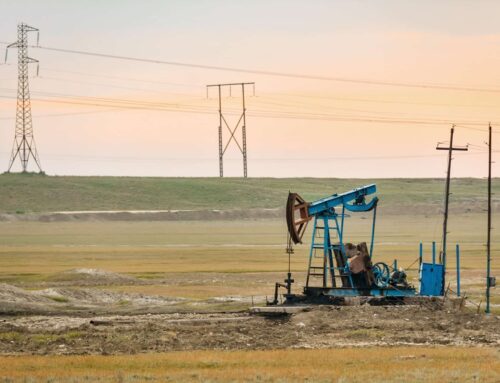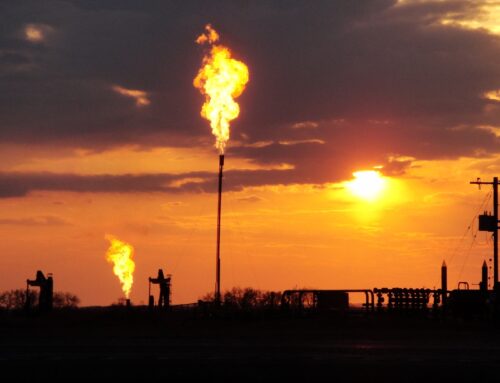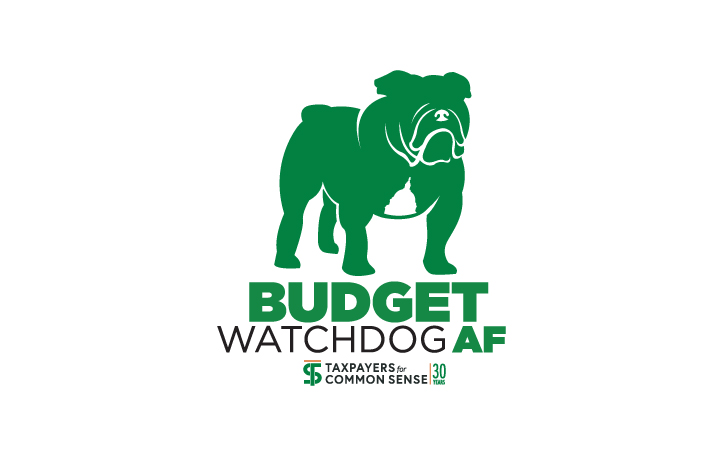On October 23, the Department of the Interior announced plans to reopen 1,563,500 acres of the Coastal Plain of the Arctic National Wildlife Refuge (ANWR) to oil and gas leasing. The government agency’s plan was first outlined in an official Record of Decision (ROD) issued in the first Trump administration in 2020.
With this new plan, the Interior Dept. moves forward on the repeal of Record of Decision issued by the Biden Administration in 2024, which had offered fewer acres within the Coastal Plain with stricter limits on surface-disturbing activities associated with oil and gas development.
The reinstatement of the Trump Administration’s 2020 plan and repeal of the the 2024 Plan follows the executive order issued by President Trump on his first day in office calling to open the Arctic National Wildlife Refuge to oil and gas drilling.
Oil and gas boosters in Congress have similarly moved to open more of the Arctic Refuge to oil and gas leasing. On October 10, the House of Representatives introduced a joint resolution under the Congressional Review Act (CRA) to overturn the 2024 leasing plan. Under the CRA, if both chambers pass the joint resolution of disapproval, the 2024 plan will be nullified, and the Bureau of Land Management (BLM)—the agency overseeing the ANWR leasing program—will be barred from issuing a similar “rule” (including a comparable ROD), even if circumstances change and a new environmental review is completed.
This attempt to use the CRA to repeal the 2024 plan is not the first time Congress has duplicated administrative actions to open all acres within the Coastal Plain of ANWR to oil and gas leasing, despite previous lease sales drawing little industry interest and yielding abysmal results for taxpayers. The recently enacted One Big Beautiful Bill Act (OBBBA, P.L. 119-21) requires BLM to hold four new oil and gas lease sales in ANWR, each offering at least 400,000 acres. The law mandates that these lease sales follow the same terms and conditions as the 2020 ROD, issued by the first Trump administration, which allowed leasing across the entire Coastal Plain with minimal restrictions on surface-disturbing activities.
By contrast, the 2024 plan offered the congressionally mandated minimum of 400,000 acres, with additional surface development restrictions and lease stipulations, based on development potential and protections for key resources and wildlife.
ANWR is the largest refuge in the National Wildlife Refuge System, with nearly 40 percent designated as Wilderness. Its 1.5-million-acre, non-Wilderness Coastal Plain—known as the 1002 Area—can be considered for development only if Congress authorizes it. The 2017 Tax Cuts and Jobs Act (TCJA, P.L. 115-97) opened the 1002 Area for oil and gas development, mandating two lease sales within seven years, each offering at least 400,000 acres. These sales were projected to raise almost $1 billion to offset the TCJA’s $1.9 trillion price tag but generated less than one percent of that amount.
After completing an EIS in 2019, BLM issued the 2020 plan making all 1.5 million acres of the 1002 Area available for lease. The first sale in January 2021 offered 22 parcels covering 1,089,053 acres. Of these, 11 sold. Only two were purchased by private companies; the rest were acquired by Alaska’s state-owned development corporation, which later rescinded bids on two parcels. The sale raised just $16.5 million—half of which went to Alaska.
A week later, the Biden Administration paused the ANWR leasing program. In June 2021, the Department of the Interior pointed to serious analytical and legal flaws in the environmental review and 2020 plan and maintained the pause until a new review was completed. The two private companies canceled their leases in 2022. In 2023, the remaining seven federal oil and gas leases in the Arctic Refuge were rescinded, but a court order in March 2025 reinstated them.
BLM completed the supplemental review in November 2024 and issued an updated leasing plan the following month. Under this 2024 plan, the second auction was held on January 10, 2025, offering 400,000 acres—the legal minimum. No industry bids were received, resulting in no revenue for federal or Alaska taxpayers.
While the two lease sales generated less than one percent of the $905 million taxpayers were promised, the OBBBA once again counts projected ANWR lease revenue to offset new spending, estimating $452 million in new revenue between FY2025 and 2034. Yet TCS analysis shows that even under optimistic scenarios, future ANWR lease sales are likely to yield just $3 and $30 million in federal revenue, based on 20-year average bids for Alaska’s North Slope.
The promises of lease revenue that may never materialize come with substantial fiscal and environmental risks. Drilling in ANWR would shift future administrative costs and environmental liabilities on taxpayers— impacting outdoor recreationists, hunters, and anglers, and the general public. This latest move to overturn the 2024 plan and revert to the 2020 plan is another blow to taxpayers, who are already footing the bill for administrative expenses and could be left responsible for cleanup and restoration in one of the most sensitive, remote regions in the world.










